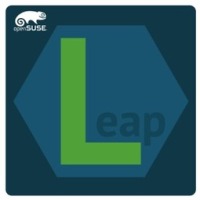©2017 Michael McCallister
Richard Brown, chair of the openSUSE Linux Community Board, reported to the openSUSE Support list this week that after the release of v13.2 in 2014 he “was faced with the very real and depressing problem of having to find a way of informing the community that there would be no more releases of the openSUSE Distribution.”
Brown wrote that “the Project was struggling to find volunteers to actually help produce the distribution” dating back to the 12.2 release in the summer of 2012.
Background: Strategy and Audience
At around this same time (2010-11), the project leadership engaged the entire openSUSE community in a strategic planning exercise, covered here and here. The strategy was summarized in this paragraph:
The openSUSE project is a worldwide effort that promotes the use of Linux everywhere. The openSUSE community develops and maintains a packaging and distribution infrastructure which provides the foundation for the world’s most flexible and powerful Linux distribution. Our community works together in an open, transparent and friendly manner as part of the global Free and Open Source Software community.
It further defined the distribution’s target audience as “users who are interested in computers and want to get work done, experiment or learn. We offer a stable and enjoyable computing experience which does not limit freedom of choice; offering sane defaults and easy configuration.”
In an email exchange, Brown said that this discussion led to “conclusions end(ing) up being so generic they are not actionable.”
Brown’s account indicates that, even after the strategy and target audience was decided, the project continued to pursue a “Linux for everyone” audience. He wrote that while the distro had a “steady, loyal, and growing userbase,” new downloads (that is, new users) declined with every release.
Leaping Over the Crisis
 What solved the distribution’s existential crisis was flipping the development cycle, using the commercial SUSE Linux Enterprise (SLE) code base as the basis for the stable periodic Leap distribution, and the Tumbleweed rolling release builds on each Leap release.
What solved the distribution’s existential crisis was flipping the development cycle, using the commercial SUSE Linux Enterprise (SLE) code base as the basis for the stable periodic Leap distribution, and the Tumbleweed rolling release builds on each Leap release.
“Instead of openSUSE no longer having a stable distribution due to lack of contributor interest,” Brown wrote, “Leap has found new contributors in addition to the ones we effectively ‘stole’ by milking SUSE’s SLE efforts for everything they were worth. … And as a result Leap has been a bigger success than I had ever hoped for. ”
Note: Brown told me that the Tumbleweed rolling release would have continued, regardless of whether the “stable” release disappeared.
Today’s opensuse.org landing page just says openSUSE is:
The makers’ choice for sysadmins, developers and desktop users.
Brown later indicated a new document outlining the “Makers’ choice” strategy is in the works, and will be presented to the community “once we think we have a solid starting point for such discussions.”
A Few Thoughts
As a Member of the openSUSE Community, I’m convinced the board and development team deserves kudos for rescuing this terrific distribution from its decline. As Brown told me, “We can’t appeal to (new users) when we advertise ourselves as ‘Linux for everybody’ – if we target everybody everywhere, we effectively target
nobody, nowhere.”
If you haven’t yet tried it, no matter what kind of computer user you are, come join our now-thriving community. I’ll be glad to help you.
©2017 Michael McCallister (contact)